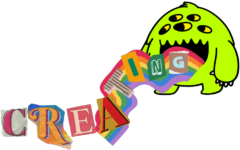The author describes levels of consciousness. Higher levels of consciousness are associated with higher control over consciousness. This in turn allows us to exert greater control over our urges, whether biological or societal.
At first I thought the book was going to be a proponent of ancient arts, advocating that the Buddhists, the Taoists and the like know something that we do not know. However, the reading took a pleasant turn when the author took a different approach to increasing levels of consciousness. He argued that the conditions required for reading high states of consciousness, the states where it is easier to get into ‘flow’ (a sense of complete immersion into the task at hand), changes with time. The practices that worked for the Buddhist founders may not work (in the same way that it did for them) for someone in our generation.
The reading goes on to describe the conditions of flow. The most important take-away for me from this section was the notion of ‘adequate effort’ (my own term here). If the task at hand is too easy, we get bored. If it is too challenging, we get anxious. It is in the middle ground that flow is achieved.
Computational modelling data suggests that an error rate of ~15% is ideal for learning. This should coincide well with where the flow state is.
